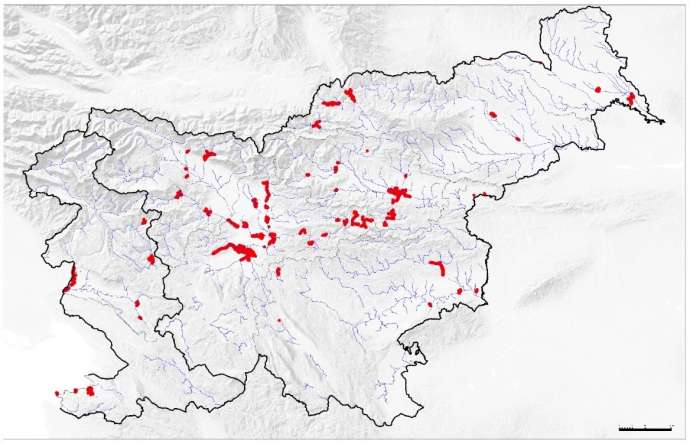STA, 6 December 2018 - The government has adopted a disaster risk assessment report for the past four years and a new national disaster risk assessment which finds that floods are the only top-level risk to the country.
The report sets out scenarios for various types of accidents or disasters and their effects on the population, business, the environment and cultural heritage. It also assesses probability levels.
Considering the scope of political and social impacts and the likelihood of disaster, the only top-level risk to the country is represented by floods.
An earthquake, ice storm or the risks of biological, chemical, environmental or of unknown nature for people's health are assessed as entailing high-level risk.
Related: Floods in Slovenia, Especially Along Drava (Videos)
Meanwhile, a nuclear accident is assessed as mid-level risk because of the very small likelihood of such an accident happening.
Also assessed as middle-level risks are cyber threats and large wildfires, despite being assessed as the likeliest of all types of accident.
The lowest level of risk represent radiological or train accidents.
Related: Slovenia’s 38th Earthquake of the Years Strikes Near Postojna
The biggest impact from the aspect of the effect on people is attributed to a major nuclear incident at the Krško Nuclear Power Plant.
In the worst-case scenario and providing inadequate protection measures, up to one thousand people could die and up to several thousand could be injured or exposed to radioactivity. Between 40,000 and 100,000 would have to be moved from the area permanently.
The country would also face grave consequences in case of a flu pandemic, which falls in the category of a danger of risks of biological, chemical, environmental or unknown nature on people's health.
Such a pandemic could claim some 1,850 lives with up to 45% of the country's population taken ill, although not within days but in a space of between several months and up to almost a year.
A major earthquake in central Slovenia would claim 60 casualties, 600 injured and the evacuation of more than 5,000 people.
The map at the top of this story is from the Institute of Water for the Republic of Slovenia






